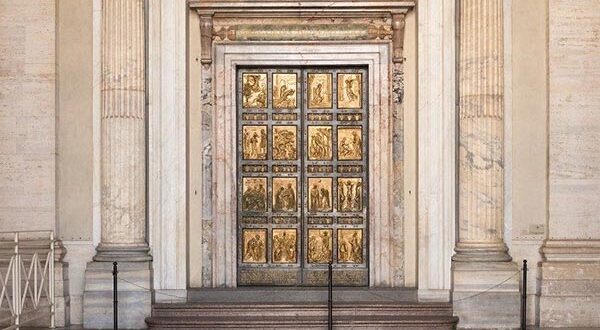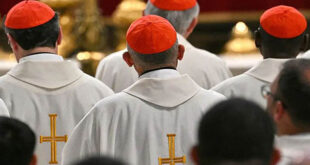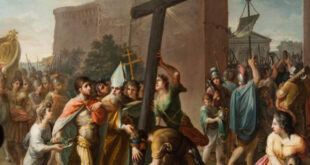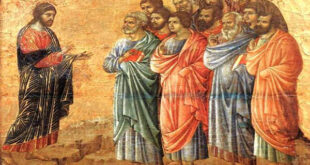In the vast tapestry of Catholic tradition, few images are as rich in symbolism and meaning as the Holy Door. This threshold, found in the major papal basilicas of Rome, becomes a tangible symbol of God’s call to conversion, mercy, and grace. In this article, we will explore the history of the Holy Door, its theological significance, and how we can bring its message into our daily lives.
The Origin of the Holy Door
The tradition of the Holy Door has ancient roots but took its current form during the Jubilee of 1500, when Pope Alexander VI inaugurated it as a visible sign of a Holy Year. Since then, every Jubilee Year, celebrated approximately every 25 years, the Holy Door is opened as a symbolic gesture inviting the faithful to cross the threshold into a renewed life in Christ.
The basilicas with a Holy Door are four: St. Peter’s Basilica, St. John Lateran, St. Paul Outside the Walls, and St. Mary Major. These doors are sealed after the closing of the Holy Year and ceremonially reopened at the start of the next, marking a special time of grace.
The Theology of the Holy Door
The Holy Door is not merely a ceremonial act; its theological significance is profound. In Scripture, doors symbolize access to something new: entry into the Kingdom of Heaven (cf. Matthew 7:13-14), refuge in Noah’s ark (cf. Genesis 7:16), or the mercy offered by Christ, who describes Himself as “the door” (cf. John 10:9).
Crossing the Holy Door is a physical act symbolizing an interior transformation. It serves as a reminder that Christ is the door through which we must pass to attain salvation. This gesture also emphasizes the universality of the Church, which invites all, without distinction, to walk toward God’s mercy.
The Holy Door is closely tied to the concept of the Jubilee indulgence, a special gift of grace granted to those who cross it with the proper disposition: repentance, sacramental confession, Eucharistic communion, and prayer for the Pope’s intentions. This act does not automatically erase sins but helps heal the temporal consequences of our faults, renewing our relationship with God.
The Current Context: Mercy in a Wounded World
Pope Francis, during the Extraordinary Jubilee of Mercy in 2015-2016, gave new vigor to the tradition of the Holy Door. For him, this gesture symbolized an opportune time for the world to rediscover divine mercy amid violence, indifference, and human suffering.
In a world fractured by conflicts, divisions, and inequalities, the Holy Door is an invitation to recognize our need for reconciliation and to extend that same forgiveness to others. Francis insisted that mercy is not just an attribute of God but a call for every Christian to live with compassion and tenderness.
How to Live the Message of the Holy Door in Daily Life
Although not everyone can physically cross a Holy Door in Rome, its message can be lived out in our daily lives. Here are some practical ways to integrate this call into your spiritual journey:
1. Open your heart to mercy
The Holy Door reminds us that God never closes the door on His children. Reflect on the areas of your life where you need God’s mercy. Acknowledge your faults, seek sacramental confession, and experience the joy of a renewed heart.
2. Be an open door for others
Just as Christ invites us to pass through His door, we are called to be bridges to Him for others. This means opening ourselves to forgiveness, reconciliation, and solidarity with those around us.
3. Practice works of mercy
The corporal and spiritual works of mercy are concrete ways to live out the spirit of the Holy Door. Feed the hungry, clothe the naked, comfort the suffering, and pray for the living and the dead. These acts, though small, have a profound impact on our relationship with God and our neighbor.
4. Make your home a “holy door”
Transform your home into a place of welcome, love, and reconciliation. Every time you cross your home’s threshold, remember you are called to bring Christ’s peace to the world.
Conclusion
The Holy Door is more than a rite or tradition: it is a call to profound conversion, a reminder that Christ continuously invites us to a new life. In a world yearning for hope and restoration, this symbol inspires us to live as witnesses of divine mercy.
May each of us, as we cross our own “holy doors” daily—whether in our hearts, relationships, or communities—find the strength to live as instruments of God’s peace and love. In doing so, we will transform our lives and contribute to the spiritual renewal of our world.






